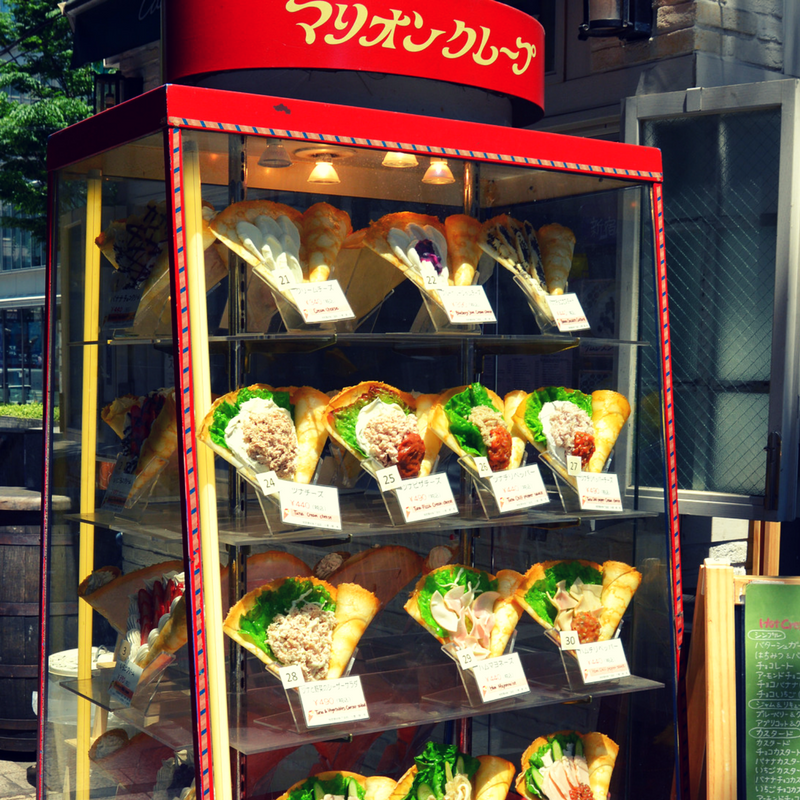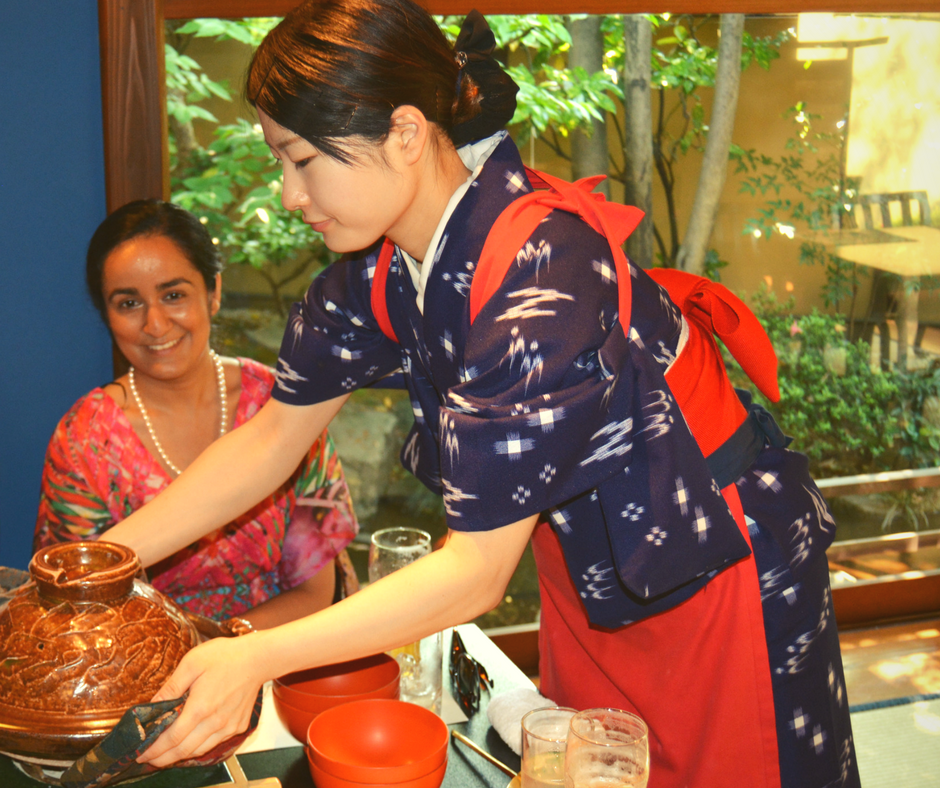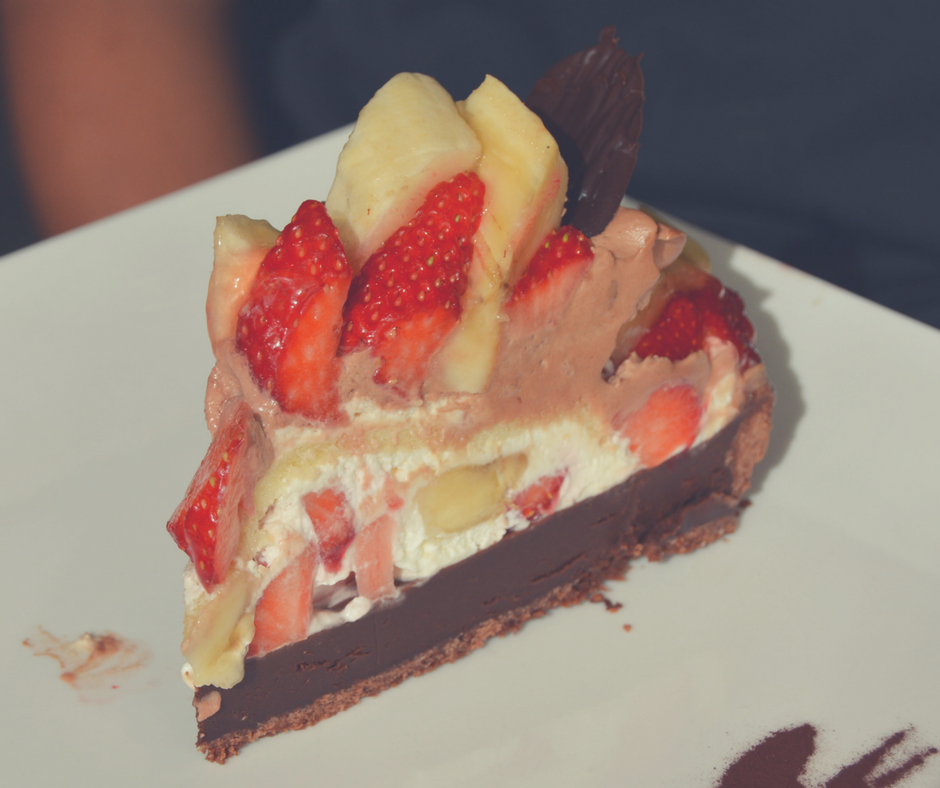Quite often we hear this phrase, or something equivalent, like ‘Tell me what you eat and I’ll tell you who you are’ as the German philosopher, Ludwig Andreas, pointed out. As a fitness aficionado, I used to think it made sense; if you eat healthy, your being will reflect that. Recently though, I have been thinking that this statement seems a bit reductive or at least not so straight forward. Surely, there must be other variables at play here – culture being one of them.
May 2016: Strolling in streets of Tokyo I can’t help but notice the number of cafés, and boutiques painted in pretty pastels and pink, heavily borrowing from French culture, aesthetics and language. Although riddled with mistakes at times, I found the use of French language intriguing.

Interestingly enough, the crowd in such cafés is mostly feminine. Like the desserts there, the ladies have a je ne sais quoi; a delicate French demeanour which seems to have been transposed straight from a Parisian salon de thé. You only remember that you’re in Tokyo when hearing other patrons speaking softly in Japanese, or through the omnipresence of matcha or red bean in desserts.
In addition to capitalising on the French style, cafés propose a variety of French pastries, including choux, crêpes, mille-feuilles and macarons. Japanese cafés have also mastered the art of French dessert making in an impressive way. Whether in taste or in presentation, desserts are perfectly crafted, with a scrumptious balance in the flavours and detail in flamboyant presentation.

Interestingly enough, the crowd in such cafés is mostly feminine. Like the desserts there, the ladies have a je ne sais quoi; a delicate French demeanour which seems to have been transposed straight from a Parisian salon de thé. You only remember that you’re in Tokyo when hearing other patrons speaking softly in Japanese, or through the omnipresence of matcha or red bean flavours.

Such a strong French influence being so puzzling to me, I had to ask my good friend Dipa, who lives and works in Japan, what all this is about.

She explains that this attraction vis-a-vis the French culture, especially when it comes to gastronomy, lies more in the aesthetic it brings to the table. The Japanese like pretty things, and appearances are paramount. French patisserie therefore reflects an aspiration, a trend which denotes beauty and style served in bite sized portions; characteristics also attributed to the construct of femininity, and the concept of Kawaii.

On the other hand, Dipa also points out “Things are not what they seem, whether for the cakes or the people”.
Dipa is very cryptic like that. But I reckon that what she means is that the appearance of food, as well as that of people, is more important than their actual substance. So what does it say about the Japanese? Aren’t those ladies at the cafés as sweet and soft-spoken as they seem to be?

Japan is a conservative society where men work and women look after the domestic life. Now I can hear you say how unfair this is, and how this arrangement is sexist. But did you know that the salary earned by the man goes straight to the woman of the household? In fact, it is up the woman to manage all expenses of the household and in doing so she allocates a stipend to the man. In spite of appearances, women seem to actually be the decision makers at home. While they calmly sip tea and eat pretty cakes, Japanese women manage the backstage of their lives without even having to work as men do. To me, this illustrates the idea of an iron fist in a velvet glove.

Like women go to cafés, men are often found in izakayas. An izakaya is the equivalent of a relaxed pub where people hang out after work, nibbling on snacks and drinking beer or sake. It is very uncommon to find a woman in an izakaya. Japanese pubs propose foods like fried chicken or Yakitori (literally meaning ‘bbq chicken’), raw meat and seafood, chicken hearts on skewers etc., and almost no desserts. We are definitely far from the refined cafés, and izakayas exude masculinity, with food that is more down to earth.

While cuisine and food seem to reflect a clear distinction between gender identities and roles, it also seems that this idea can be challenged at times.
I can’t help but compare this to Mauritius where, as far as my experience goes, different types of food and cuisine are not associated to gender. Eating a dholl puri on the streets of Port-Louis, followed by an alouda is neither feminine nor masculine. It is simply an appreciation of street food. There are many other ways in which gender is constructed and reinforced in Mauritius, but I’m not sure that food does to such an extent. I mean, I still get a strange glance from waiters, sometimes, when ordering a burger with all the works as opposed to a tiny salad, but hey, that’s fine, and it does not confine me to any social construct.
On that note, I’ll have a piece of this freshly baked Red Velvet beauty before heading to the pub for a drink! Don’t mind if I do :).

JAC.



Hi! Thanks a lot for joining Thoughts of SheryL!
Great blog! 🙂
LikeLike